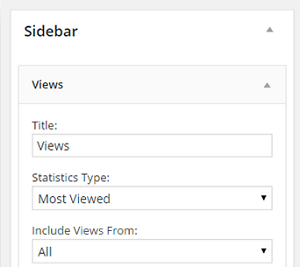
Writing a successful sales email requires a careful consideration of options and variables, rather than a one-size-fits all approach. No matter who your audience is, or what you’re selling, the most important aspect of a cold email is figuring out how to instantly connect with the reader. Great sales emails aren’t about casting a broad net; they’re about angling for a very specific and valuable fish.
Before you actually sit down to start writing your cold email, it’s essential to understand your audience. Your whole approach must be tailored to your recipients if you want your email to stand out from the rest of the inbox chatter.
Once you have defined your audience, and identified the best sales strategy to use, the actual composition process is relatively easy. You plug the right information and appeals into the right places and get busy developing leads. Take these steps to build a stronger connection with the readers of your next cold email.
1. Articulate Your Value Propositions
What is it about your product or service that actually makes it worth paying for? Do you have a unique, killer feature? Is it easier to use? Does it cost less, or offer more than the competitors? The answers to these questions might seem obvious to you, but more than one brand has fallen by the wayside because they misunderstood or failed to articulate their own appeal. Once you understand what truly makes your offerings valuable, you can accentuate those qualities in your cold emails.
2. Discover Your Customer’s Pain Points
B2B deals are rarely closed on impulse. Any enterprise that is willing to invest in a product/service needs to be convinced it can deliver something significant in return. That means the value propositions you’re highlighting must help relieve your customers’ real pain points. Figure out what problems you can actually solve; not just the flashiest features of your product. That way you can position yourself in your cold email as having an invaluable solution that can improve the way your prospective customers do business.
3. Analyze the Marketplace
You have to be both honest and realistic about the position of your own company. If you are trailblazing and have little competition, you should use your copy to educate and inform your readers rather than play up your innovative ambitions. Because your offering is likely to be unfamiliar, readers will have a hard time understanding your value if you don’t connect the dots for them, and offer tangible use cases and results. Conversely, if you operate in a heavily competitive and commoditized market, you need to use your copy to assert what makes you distinct and valuable to all those other options. The more competition you have, the more you should consider going the extra mile to use additional personalization, along with other ways that will make your emails even more targeted so that you can stand out above all the noise.
4. Calibrate Your Timing
Timing affects not just when you send out your email, but also the tone and language you use. If seasonal factors impact when a product will be available or how much it will cost, that information can lend the email a sense of natural urgency. Conversely, having the wrong timing, like when your prospective customers are already out of budget, or thinking about other more important things, can also make your message sound irrelevant. If you’re going to try to create a sense of urgency in your cold emails, you need to make sure that it seems credible and beneficial to the reader, or else they’ll feel pressured and skeptical of your claims.
5. Determine How Educated Your Audience is
Since you are reaching out to an audience that has never previously expressed interest, it’s fair to assume they don’t know much about what you do. Figuring out how much they actually do or do not know is essential. If you neglect to offer explanations and illustrations, you’re likely to leave your audience bewildered. On the other hand, offering your audience overly obvious information can make it feel like you’re ‘talking down’ to them or wasting their time. Locate their level of education and respect it.
6. Evaluate the Familiarity Level
Cold emails are unfamiliar by their very nature. You have to overcome this familiarity in order to get a response and start a conversation. While some companies have the luxury of already having a well-known brand with a positive reputation, many people sending cold emails will be much less known to their audience. However, you should never use your brand in a self-promotional or arrogant way, or else you will come off as obnoxious and condescending. Even if you work at a popular company, resist the urge to use internal marketing jargon or tout all your awards and popular features, and instead focus on adding social proof to your emails.
7. Visualize the Buyer Persona
This ubiquitous marketing exercise is especially important when writing cold emails. It’s never enough to simply write for a generalized reader; you have to write emails for a real person. Knowing the demographic of your audience, their personality, and the issues singular to their work is essential to writing a good email. A fully fleshed-out buyer persona can even help you anticipate the mood of your reader when your email arrives in their inbox.
The work you put in before you start writing is your best asset. Crafting the perfect message is a lot easier after you already know which pain points and benefits to focus on, along with which keywords and indicators to incept inside your email. And since your message was so carefully targeted, it has a much better chance of getting attention and action.
Pick the right cold email tactic and you have the key to open any door.
How do you go about choosing your sales email strategies? Let me know and I will try to work your insights and experience into a future article.
Digital & Social Articles on Business 2 Community(77)
Report Post






